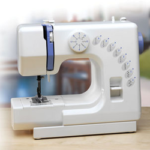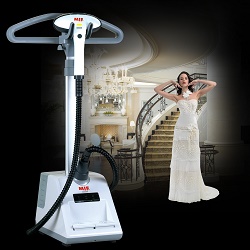Possibilities of embroidery and sewing embroidery machines
The embroidery machine is designed for decorating materials of different density and texture with various artistic drawings, logos or ornaments. Modern devices are able to create both simple and complex embroidery of excellent quality. Full automation greatly simplifies the process, eliminates defects. A good embroidery or sewing embroidery machine is a combination of the necessary options, good assembly and optimal cost. In order to correctly determine the model, it is useful to familiarize yourself with the main criteria and features of the equipment.
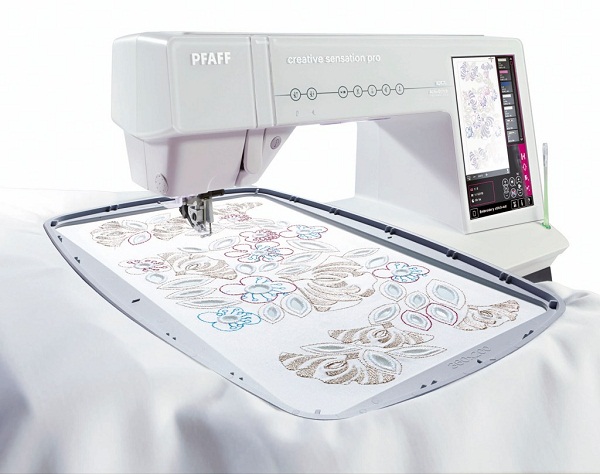
Content
Embroidery Machine Classification
To begin with, let's look at what kind of embroidery machines are, and what are their fundamental differences.
According to the principle of work
All variety of embroidery machines is initially divided into two categories according to the principle of work:
- computer;
- free running
The first type is modern, practically fully automated devices. The operator is required a minimum of manipulations: setting, threading, setting the fabric into the work area. The quality of the stitches is the responsibility of the computer processor and the program.

The second type will require considerable skill and experience from the user. The principle of operation in some ways resembles darn, such devices are much inferior to computer machines in performance and usability. Unlike automated technology, mechanical cars do not control the process and do not report errors in customization or use.
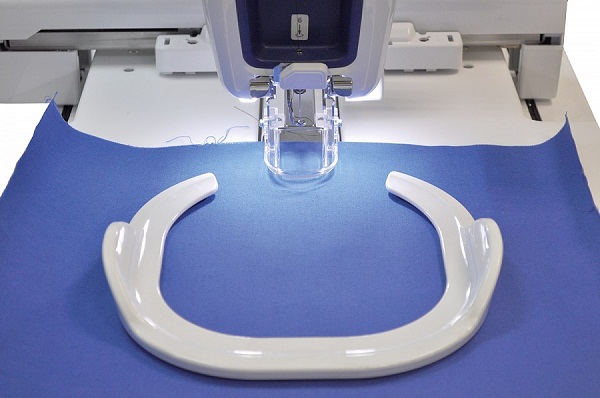
By functionality
In addition, you will have to choose between highly specialized and combined models:
- embroidery machines are designed exclusively for embroidery or appliqué fabric;
- sewing embroidery machines combine two devices: sewing and embroidery.
Single-head embroidery machine performs the operation with one head, multiheads, in turn, cause drawing with several. In addition, several heads cope with such a task as a combined embroidery.
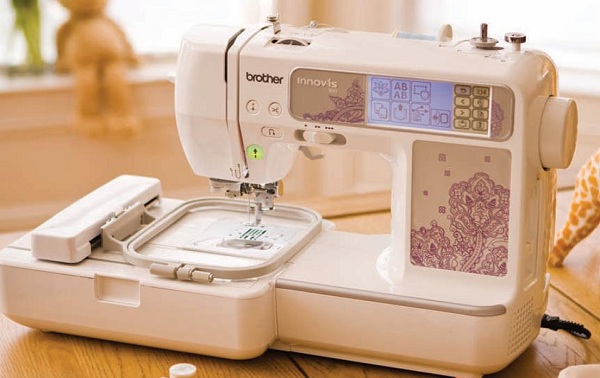
Sewing machine
The division into classes does not differ from the categories of any technology.
- Household economy class differ in limited functionality, low speed, affordable cost, small size of the field for embroidery. Such devices are suitable for home use and small decorative works. Complicated drawings are unlikely to do them, but they will cause simple illustrations or patterns.
- Semi-professional "sharpened" for small-scale production or the creation of exclusive designer products. Their speed and set of lines exceeds the capabilities of household models.
- Professional Machines are distinguished by quality, accuracy of operations, functionality, reliability and the corresponding price.It is rational to purchase them only for production purposes.
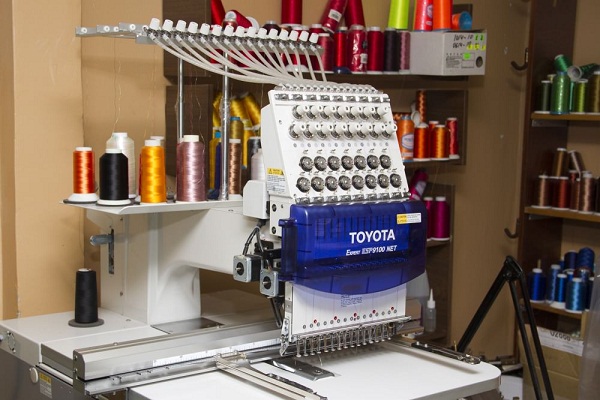
Professional embroidery machine
Household and semi-professional embroidery devices can be conditionally combined into one group, but the professional category of equipment is a separate topic. They have such wide functionality that its review will take more than one chapter. For those who are interested in equipment of this class, there is a great opportunity to test them and visually assess the possibilities at sewing equipment exhibitions or distributors in showrooms.
Completion and design features of different machines
The size of the drawings - this is probably the first thing you need to think about before buying. The working area or hoops directly determine the size of the future embroidery. There are additional hoops for sale in different sizes, but each machine has its limitations. Given the cost of equipment, do not neglect the requirements of operation and install unsuitable accessories.
Completion of household sewing embroidery or embroidery machines, as a rule, contains only small hoops, large need to be purchased separately, but you should not do it right away.Experts recommend to work on the "regular" embroidery machine hoops and later decide on the acquisition of a larger field for embroidery.
Embroidery hoops are adjustable and continuous. The adjustable part is suitable for creating endless patterns, for example, for decorating bed linen and tablecloths. They also allow you to create large embroidery in several operations. In this case, the computer program must support the function of splitting the sketch into a certain number of parts.
It is important to know! Mounting hoop is of two types: one-sided or two-sided. The second type will provide more reliable fixation of the working area.
The stitch length also depends on the size of the hoop; well, if its width reaches 9 mm, this will allow you to create beautiful artistic drawings. Hoop shape affects the final result, as a rule, round professionals speak much better than rectangular ones. The fabric should be evenly stretched over the entire area, so that the pattern was embroidered evenly, without distortion and distortions.
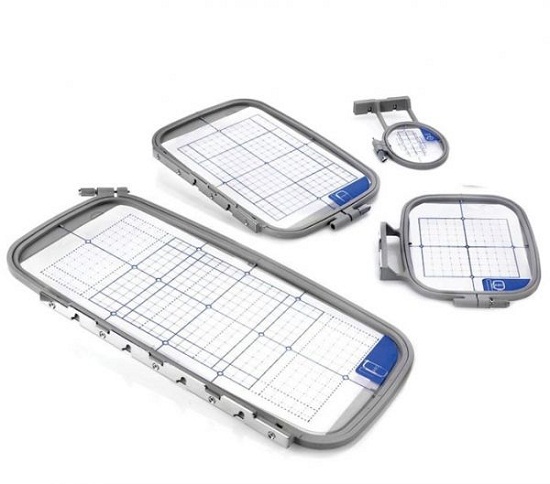
Brother embroidery hoop set
Decorative features
The type of embroidery or functionality of each model is different.Any household embroidery machine can embroider a cross, but modern “stepped up” in this plan much further. Pay attention to two factors: the number of programmed lines and available embroidery techniques. The more lines, the wider the decorative possibilities, and their combination will allow you to create unique ornaments.
Evaluate the technique in which you need to get embroidery. Latest models are able to embroider:
- cross;
- satin stitch;
- sfumato;
- photo stitch;
- richelieu;
- patchwork;
- quilting;
- perform stripe applications.
Conveniently, if the machine supports design editing functionwhich includes position adjustment, scaling, addition of a sketch with various details. Pay attention to those models that occupy the first places in the ranking of the best cars of 2016. The equipment of the early years of release is somewhat inferior to them in decorative capabilities, and the latest innovations are always equipped with new technologies.
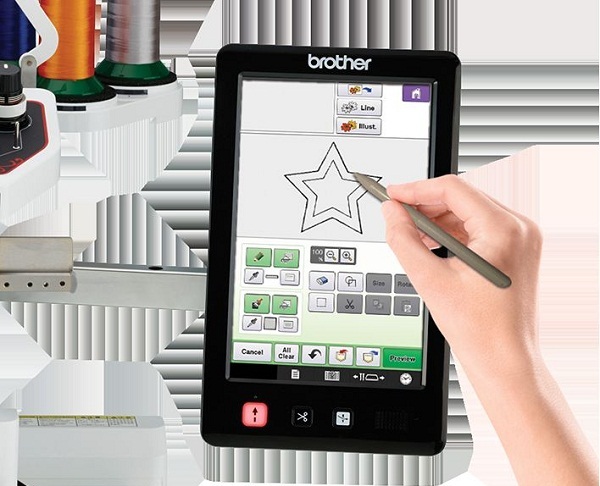
Sewing function
Sewing and embroidery household machines not bad combine both functions with high quality manufacturing of the main components of the mechanism. Embroidery operations take a long time, and all sewing opportunities will stand idle while drawing is applied to the material.
It is important to know! When buying a sewing embroidery household or semi-professional machine, specify its equipment. The embroidery unit is not always included in the basic delivery, and it is purchased separately. The device at the same time is much cheaper.
The extent to which the increased expenses for equipment are justified determines the range of planned activities. It is rational to purchase a combined model in those cases when there is no good sewing machine at hand, but there is a need for such operations. For example, when performing one decorative operation with subsequent processing or fixing of the element on the product.
When decorative tasks are non-permanent or necessary “on occasion”, it also makes sense to choose a sewing and embroidery (combined) machine. The manufacture of exclusive products often requires logo application or various drawings to make things unique.
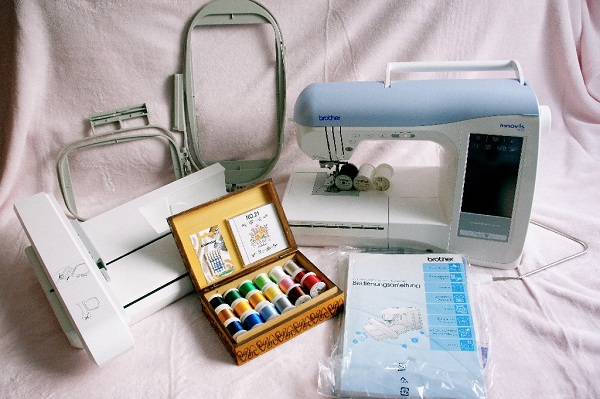
Complete set of sewing embroidery machine
Software computer models
Computer embroidery machines for business or home provide excellent quality of drawing. The use of such devices allows you to perform the operation with maximum accuracy and clarity.
One of the most important criteria when choosing a new device is the software of the machine. In order not to be mistaken, it is necessary to have at least a general idea of what nuances will affect the usability, as well as the result. So, what you need to pay attention to:
- processor performance;
- Memory;
- monitor type;
- sketching compatibility;
- file upload / download method.
It is important to know! Each computer machine is equipped with a basic program that allows you to apply embroidery on fabric using ready-made design patterns or their edited copies. To create your own, unique drawings, you can purchase specialized software.
Do not rush to purchase the program to develop your own sketches, if you are not sure that this will be necessary. To master the program, you need to be trained in video or books. Today there are whole courses for novice designers.
Not be superfluous presence in the car sensors in the embroidery process management. When the upper / lower thread breaks or ends, the program beeps, and the device stops. After replacement, the process continues from the same place.Automation allows you to leave the equipment unattended.
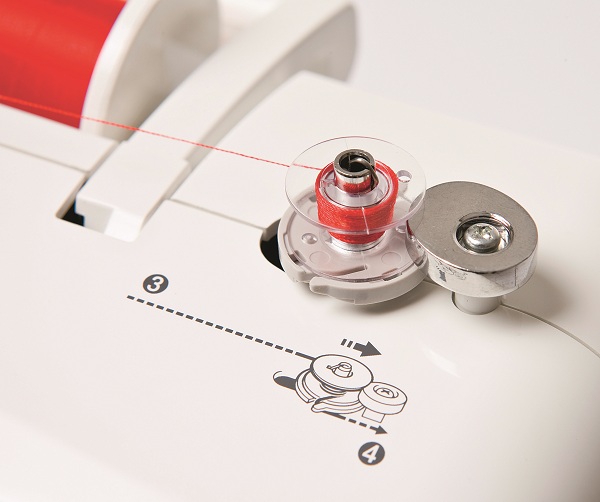
Key criteria for choosing a computer "brain"
Before you go to the store to buy embroidery or sewing embroidery machine, you should be familiar with the important characteristics of these devices. From your awareness will depend on the further comfort of work.
CPU
The process of embroidery is managed by the processor, therefore, power directly affects the quality, speed and reliability of work. Computer equipment monitors the operator, warns of errors and makes recommendations to the operator.
In practice, it looks like this: the program checks whether the needles to the fabric are correctly selected, automatically adjusts the tension of the threads, adjusts the settings depending on the selected material. Whether it is worth saying that the option of the computerized machine will be useful both to the skilled master, and the beginner.
Memory
It determines which number of sketches design can save device. Some manufacturers, in addition to templates, memorize the instruction manual, so that it is always at hand with the operator, as well as video tutorials.For experienced computer users, this criterion may not become important, because all designs can be unloaded and stored on other media. But it is worth noting, it is not very convenient.
Display type
According to the types of monitors, all machines are divided into three types: a monochrome screen, a color touchscreen display and devices without a monitor. The latter type implies the output of a picture on an additional screen, for example, on a computer or laptop. Here, the choice is pretty simple:
- To perform simple drawings, drawing ornaments or fonts, a two-color monochrome display will be enough for the user.
- The touch color screen clearly demonstrates the final result, will allow making small adjustments to the drawing.
- You can connect a laptop or a computer to machines without a display, which is convenient, because the picture will be on a large scale, you can see all the details of a complex sketch. The disadvantage of this solution is obvious: while the embroidery machine is working, using the computer will fail.

Sketching compatibility
This is an opportunity to use templates developed by third-party manufacturers or specialized design companies.Each brand's sewing embroidery or embroidery machines have their own software and designs. Using samples of foreign companies will significantly expand the potential of the device.
In addition, you need to take into account the scale and maximum size of the picture, otherwise defects and bevels are not excluded, the product in this case will be rejected.
Storage of drawings
All sketches of drawings are stored in the memory of the machine in a specific format. Professionals in their field do not recommend to purchase modifications where the download is carried out using highly specialized drives. For example, through specially designed for memory card machines, because if the media fails, the removable can be quite expensive if it can be found on the market at all.
Make a choice in favor of common methods: USB-port, Wi-Fi, Bluetooth-modules. If there is a regular CD-Rom in the embroidery machine, this is also convenient, the cost of consumables (disks) is quite low, and unlike USB drives, they are less intricate to use and store. Another solution to the issue - the ability to directly connect to a computer, here pay attention to the type of cable.Consider buying a replacement or used.
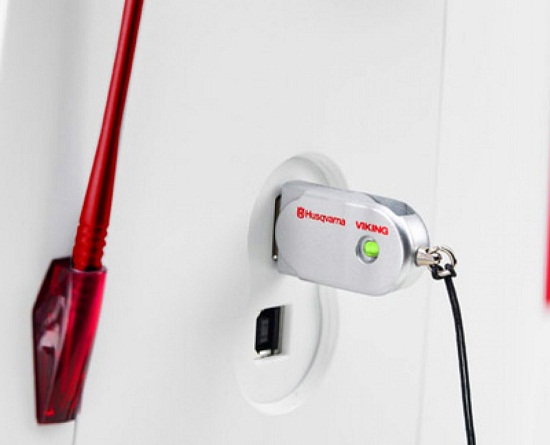
Remember the important rule of technology: it is more profitable to buy a machine a bit more expensive, but with cheap consumables than a cheap model with expensive adapters, cables or memory cards.
Before choosing an embroidery machine, users need to carefully familiarize themselves with all the main characteristics and assess needs. And most importantly - to make a plan for the future expansion of tasks.

/rating_off.png)






